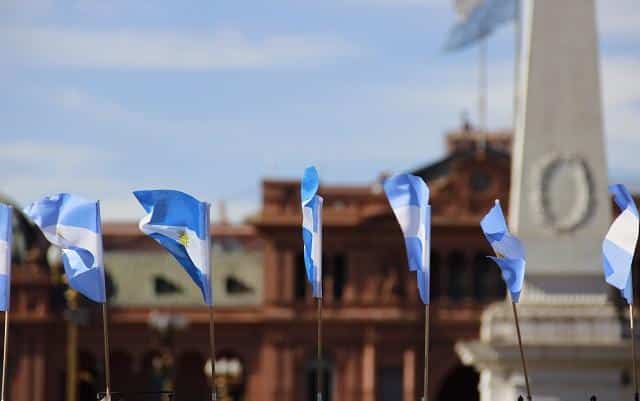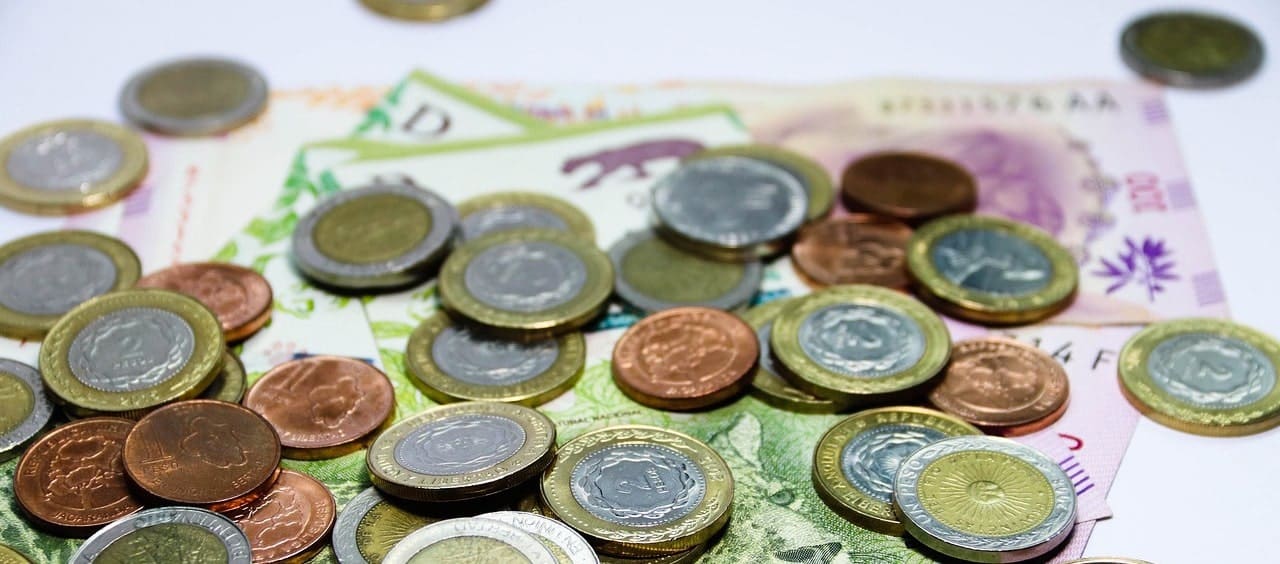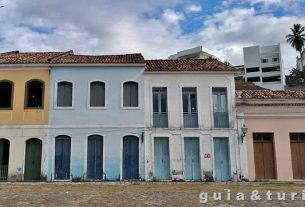It doesn’t matter the time of day: it is impossible to walk along Calle Florida, in the center of Buenos Aires, without hearing the mantra “Câmbio, Câmbio” chanted at the top of their lungs by dozens of money changers. This is a relatively new market in Argentina, which has existed since the government, in an attempt to control the crisis and prevent a lot of money from traveling abroad with Argentines, started to make it difficult to buy and sell foreign currency within the national territory. . And it was to circumvent this restriction that parallel exchange flourished in Argentina.
Parallel. A word often used to define things that are theoretically illegal, but practiced left and right. And also as a euphemism for another, much uglier one: counterfeit. These two factors explain many people’s fear of facing the parallel exchange rate in Argentina – am I going to buy pesos from some kind of mobster, in a little shop hidden from the police? What if I get arrested while trying to make it in the Buenos Aires underworld? And, worse, what if the money is in fact parallel, that is, counterfeit?
Legitimate fears, dear reader. I thought about the same things before arriving in Buenos Aires. A month and a half later, I’ve used parallel exchange so many times, always without any difficulties or problems, that I almost can’t understand why I had that initial fear. The big deal, which makes even the most cautious traveler at least think about using the unofficial exchange rate, is simple: there are two standards in Argentina. Or more.
See too:
• Where to stay in Buenos Aires
• What to do on a weekend in Buenos Aires
• How to save money on a trip to Buenos Aires
Parallel exchange rate x Official exchange rate
Still in Brazil, I bought some Argentine pesos. Not much, just the basics to pay for our first travel expenses, like a taxi from the airport. At the time, I paid around 1 real for every 2.26 pesos, just a little different from the amount charged by the official exchange offices in Buenos Aires. A week later, already in the capital of Argentina, we went to Calle Florida to see what the parallel exchange rate was. Without much effort, we managed to find the exchange rate of 1 real for every 4 pesos (exchange rate in August/2015).
Do the math. At this rate, if you buy a thousand reais in pesos at the official exchange rate, you will have 2,260 thousand pesos. In parallel, your reais are worth 4 thousand pesos, a difference of almost 50%! And you can find even more advantageous quotes. In reality, since Argentina’s fight with vulture funds and the negotiation of the country’s debt began, the parallel dollar (and, consequently, the real) has soared.
When we arrived here for the first time, on July 15, 2014, 1 dollar was worth 11.80 pesos at the alternative exchange rate. Just over a month later the value was already 13.50 pesos for every dollar. Today, in August 2015, the dollar is already worth 14.50. Because of this stark difference, the best way to bring money to Argentina is in cash (forget travel cards), be it reais or dollars.
Is parallel exchange still worth it in 2020?
During the years of the Macri era, exchange rate restrictions were abolished and people could buy dollars freely at banks and official exchange offices. As a result, the difference between the two prices decreased significantly and the illegal trade in money lost much of its strength. Even so, exchanging money on the parallel market continued to be advantageous, although the difference was not as large as before. Even during the president’s term, it was still possible to find dollar, euro, real and other currency traders on Calle Florida.
With the worsening of the Argentine economic crisis, however, in 2019 the government ended up imposing new restrictive measures on the control of the foreign exchange market, to prevent money from leaving the country. This breathes new life into the black market, and the expectation is that the difference between the parallel and official prices will skyrocket again. Therefore, exchanging money with Argentina’s parallel exchange rate should continue to be advantageous in the coming years.
The tricks of parallel exchange in Argentina
Exchanging currency on parallel exchange is very simple. Although there are money changers spread throughout Buenos Aires (and also in other cities in the country), the mecca for money changers is Calle Florida, a pedestrian-only street that runs through the city center. The parallel exchange is done so openly that, as stated at the beginning of the text, the exchangers spend the entire day shouting in search of customers, in front of police officers and even just a few meters from Casa Rosada, the seat of the country’s executive power. So the government knows this happens. And he doesn’t even close his eyes to pretend he didn’t see it.

Do you want to exchange your dollars or reais (here we explain the best currency to take to Argentina)? In Florida you can check the best price of the day by consulting several money changers. The price varies according to the amount of money you intend to exchange – the more money, the cheaper the peso. Furthermore, large bills, like $100, are worth more than small bills (like a $10).
In general, these money changers agree on the price you will pay. If you find it, he takes you to a store, which may look like any other exchange office or be another type of store, like a travel agency that decided to work as a currency exchange office. Exchanging money on the street is more uncommon, especially because Florida is unbearably crowded with people (and suffers from cases of theft). But they happen.
In general, the ideal is to exchange currency inside stores, for one basic reason: you know that that store will be there the next day. After exchanging currency on the parallel exchange rate a few times – and talking to several foreigners who have already done the same – I concluded that there is more fear of receiving such counterfeit notes than actual counterfeit notes. Everyone knows that cases like this happen, and I’ve even met people who have experienced this situation, but with a little care you can avoid problems.
It’s like the attendant at our hostel said, when we asked if it was safe to exchange money on Calle Florida: “In general, it is, after all, that’s their business. And they (the money changers) are not going to screw up their livelihood by giving fake bills to someone. Therefore, what everyone does is find one that seems reliable, exchange some currency and, if there are no problems, then exchange more.”
Hence the preference for exchanging items inside stores – and not in the middle of the street. That way you know that guy will be there tomorrow. Even if it is impossible to complain after the transaction has been carried out (after all, no receipt is provided and the police have nothing to do), at least the money changer who is always there, with a fixed address, has a reputation to maintain.
An alternative is to also buy money from Brazilians who live in the city and exchange reais for pesos with parallel quotes. They accept reais in cash or transfers from Brazilian banks, in this case with a slightly worse rate. There are hundreds of pages that offer this service on Facebook. Just like street trading, not all of them are reliable.
Where to exchange currency in Buenos Aires
We have already exchanged money in several fixed houses in Florida and also with people who delivered at home. Unfortunately, the safest indication we had closed its doors. When in doubt, choose one that looks like an official exchange office, like those found anywhere in the world. Having a physical structure behind is usually a sign of a reliable service.
There are dozens of places that do the service, many of them with physical stores in Florida, which gives a little more guarantee. In any case, the basic rule applies: if the quote seems very good, be wary of scammers. To follow the parallel quote of the day, click here. And never forget to take a quick look at the notes. Did you notice that some of them look fake? Didn’t trust? Order another, no drama.
Travel insurance for Argentina
Taking out travel insurance is essential, even for countries as close as Argentina and Uruguay. No matter how close it is to home, it is best to travel protected so as not to suffer from unforeseen events.
The good news is that it is possible to take out good travel insurance for around 10 reais per day. To do this, we recommend using a search engine like Seguros Promo, which compares the main insurance companies and ensures that you find the best value for money, according to your needs.
Furthermore, blog readers are entitled to an exclusive discount coupon: 360MERIDIANOS05. See some of the offers below and choose yours:
Where to stay in Buenos Aires
The main neighborhoods to stay in Buenos Aires are:
- center
- San Telmo
- Recoleta
- Palermo
The first two are for those who want to save money, stay close to everything and don’t mind clutter. Recoleta and Palermo have more expensive accommodation, but they are more upscale and beautiful neighborhoods. You can find out more about the regions in our post Where to stay in Buenos Aires.
Recommended accommodations in Buenos Aires:
Find hotels in Buenos Aires
Sign up for our newsletter

Sign up for our newsletter and stay up to date with exclusive news
that can transform your routine!
Warning: Undefined array key "title" in /home/storelat/public_html/wp-content/plugins/link-whisper-premium/templates/frontend/related-posts.php on line 12
Warning: Undefined array key "title_tag" in /home/storelat/public_html/wp-content/plugins/link-whisper-premium/templates/frontend/related-posts.php on line 13




